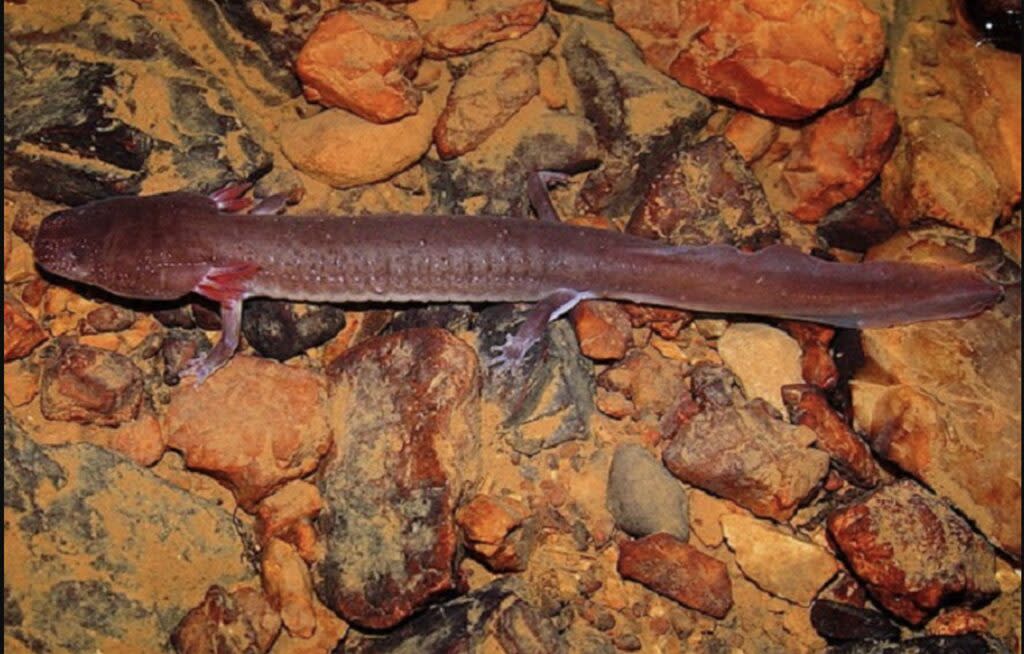Lawsuit seeks endangered species protection for rare east Tennessee salamander

The Center for Biological Diversity is seeking to endangered species protections for the rare Berry Cave Salamander (Photo: Dr. Dr. Matthew Niemiller via Tennessee Wildlife Resource Agency)
The Center for Biological Diversity has filed suit against the U.S. Fish and Wildlife Service over its refusal to grant a rare southern salamander Endangered Species Act protections.
Stretching a little over 9 inches long, the Berry Cave Salamander has been found in only a handful of isolated caves — most in east Tennessee — where rapid growth combined with farm runoff, climate change and a legacy of contamination from old quarry mines continues to degrade the creatures’ environment.
The lawsuit, filed Tuesday in the U.S. District Court for the District of Columbia, accuses the federal agency of violating the Endangered Species Act and failing to consider available scientific data.
A 2003 petition to list the Berry Cave Salamander as an endangered or threatened species wasn’t considered until 2010, after the Center for Biological Diversity filed suit over the delay. After repeatedly signaling it would approve the endangered species listing, the U.S. Fish and Wildlife Service instead concluded the the salamander did not warrant protections.
“The Berry Cave Salamander is found nowhere else on earth, and its populations are dwindling in the face of rapid development and climate change,” said Liz Rasheed, a senior associate attorney at the Southern Environmental Law Center, which is representing the Center for Biological Services.
“This lawsuit seeks to correct an egregious error that puts this incredible salamander at even greater risk of extinction,” she said.
Christine Schuldheisz, a spokesperson for the U.S. Fish and Wildlife Service, declined comment about the lawsuit Wednesday.
The lawsuit alleges that the federal agency made its decision to deny the salamander federal protections during a period when its southeastern regional office had developed an internal “quota” system limiting the number of species it would recognize as endangered.
The mauve-colored salamander with pink gills lives its entire lifespan inside east Tennessee caves. The largest known population of the salamander lives in the Mead’s Quarry Cave in Knoxville, where its numbers have shrunk by at least 60% over the last decade, according to the law center.
Endangered species designations provide legal protections for plants and animals on the brink of extinction. Endangered species can’t be bought, sold or removed, and the federal government must develop a plan to restore their populations.
The act also brings protections to habitats that sustain endangered species, providing a legal mechanism to challenge any action that could adversely impact their environments.
Berry Cave Salamander Complaint for Declaratory and Injunctive Relief
The post Lawsuit seeks endangered species protection for rare east Tennessee salamander appeared first on Tennessee Lookout.

